Come join the Menominee Nation, concerned citizens, and us on January 23 to voice your opposition to Aquila’s proposed Back Forty mine, the date of the public hearing on the wetlands permit.
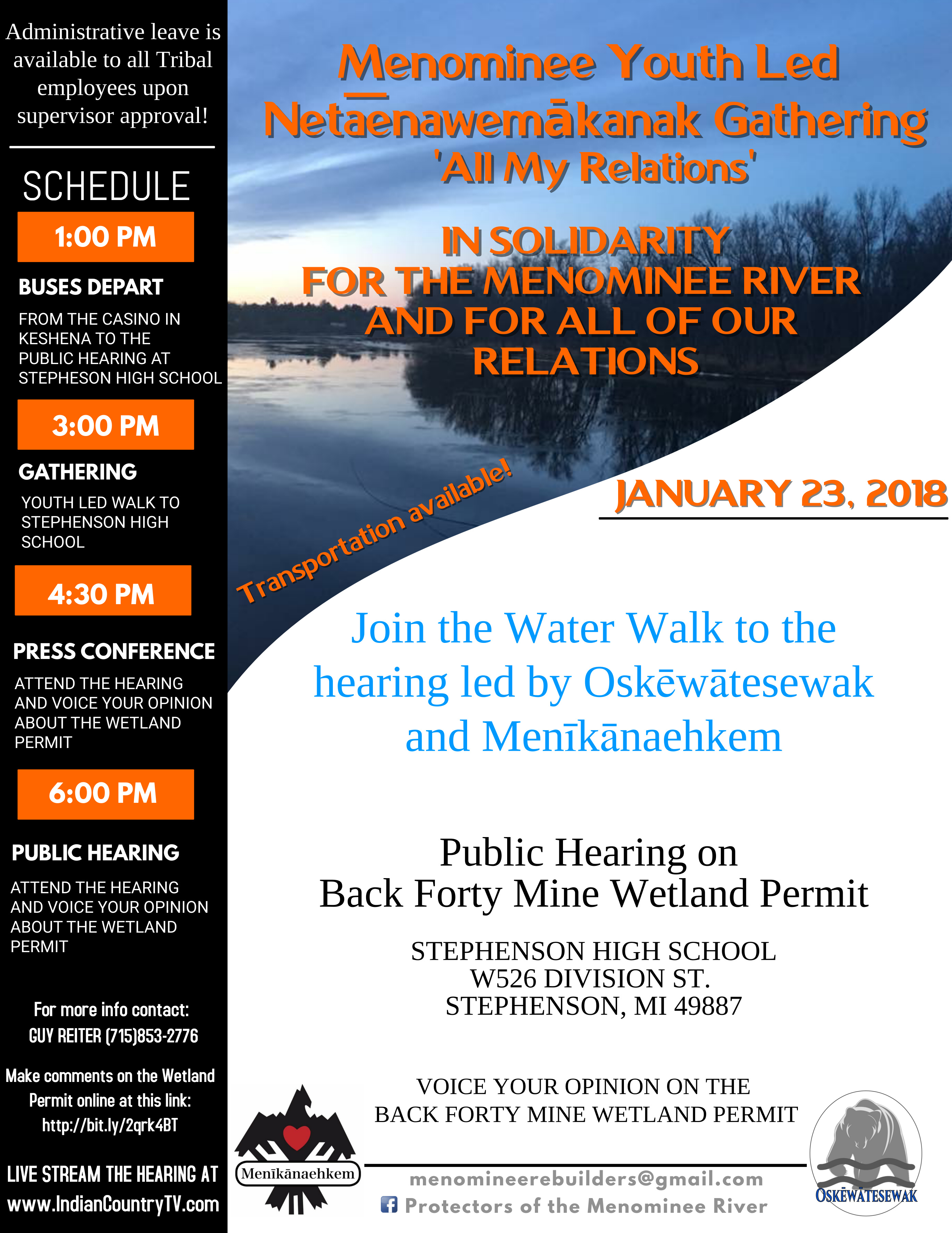

Humboldt Mill Permit Amendment Request – Comments
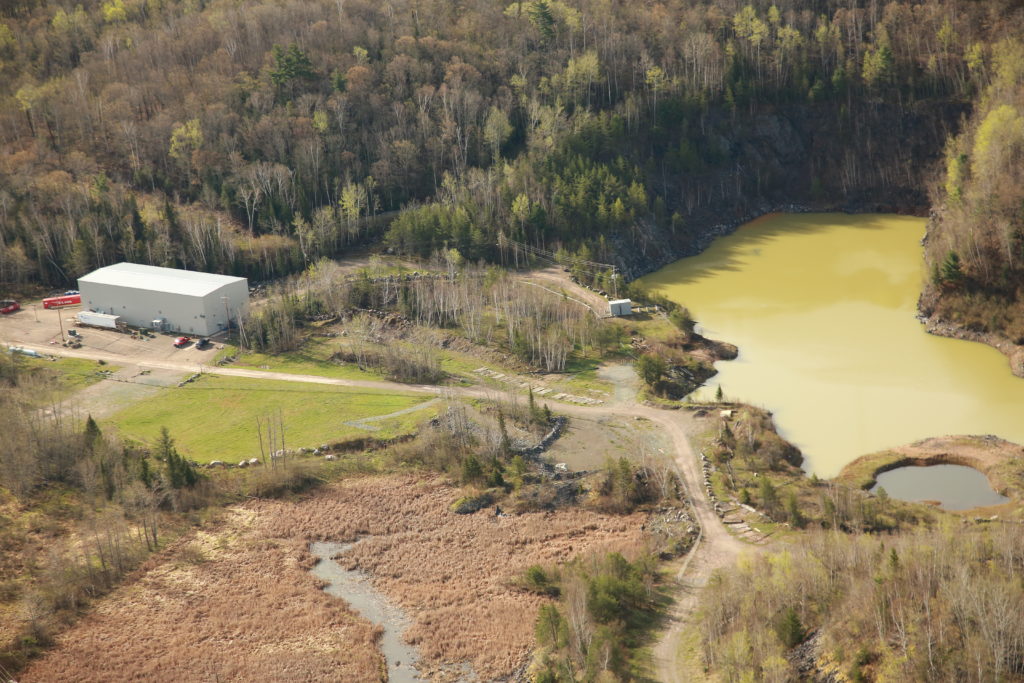
Aerial photograph showing Humboldt Mill Wastewater Treatment Plant, and the north end of the Humboldt Pit Lake, referred to by the permit amendment request as the “Humboldt Tailings Disposal Facility” (HTDF) or the “facility.” Photo by Jeremiah Eagle Eye, 2017.
“We are concerned that Michigan law (especially Part 301, with regards to the filling of Humboldt Pit Lake with toxic mine tailings) and the Clean Water Act are being applied inconsistently, and that regulations are improperly interpreted. The Humboldt Pit Lake is treated, simultaneously, as an “Inland Lake” according to Michigan’s Part 301 Inland Lakes and Streams Program, but not regarded as “waters of the state” under Part 31. The DEQ’s stewardship of Michigan’s freshwater natural resources is the shared interest and responsibility of all stakeholders. Concerned citizens, the Keweenaw Bay Indian Community, the Community Environmental Monitoring Program, the Mining Action Group and other UPESG stakeholders have all expressed our concerns regarding Lundin’s use of the Humboldt Pit Lake as a “waste disposal facility” which appears to violate common sense, as well as the law. We ask the DEQ to regulate this body of water in full accordance with the Clean Water Act and NREPA, keeping in mind that Michigan citizens and the Escanaba River Watershed will bear the burden of these polluting activities long after Lundin’s mining and milling operations have ceased.
We believe the Humboldt Mill amendment request does not fulfill the requirements of Part 632. The applicant failed to provide an updated EIA, failed to update the reclamation plan, dismissed the contingency plan, failed to provide a list of all additional necessary permits, and did not increase the financial assurity to offset the significant, permanent environmental hazards posed by additional tailings storage and reduced water cover at the Humboldt Pit Lake.
The Applicant has Not Met the Standard for Review
Furthermore, the DEQ has a statutory requirement under Section 324.63207 (6)(c) of Part 632 to “submit the request for amendment to the same review process as provided for a new permit application” and consolidate multiple permits into a single review process, to facilitate public participation.
The DEQ has Not Met this Statutory Requirement
The permit amendment request is fundamentally incomplete, as it falsely and narrowly limits discussion to a single permit condition; because Condition F.4 is being considered apart from other connected permits and deprecated permit conditions, steamrolling the permit process without offering an opportunity for public input; and because the applicant provides no supporting material, with no updated analysis of the cumulative Environmental Impacts.
“DEQ shall deny a permit if it determines that the mining operation will “pollute, impair, or destroy, air, water or other natural resources or the public trust in those resources, in accordance with part 17 (Michigan Environmental Protection Act.)”
This permit amendment request is obviously unsubstantiated and incomplete. Environmental stakeholders are unable to consider the implications of such a significant change, in the absence of monitoring data, modeling, and the lack of a revised EIA. Confident predictions made by Lundin’s experts in public presentations do not change our conclusion. Please deny the Humboldt Mill MP-012010 permit amendment request, on the grounds that it fails to meet the standard for review as required under Part 632.
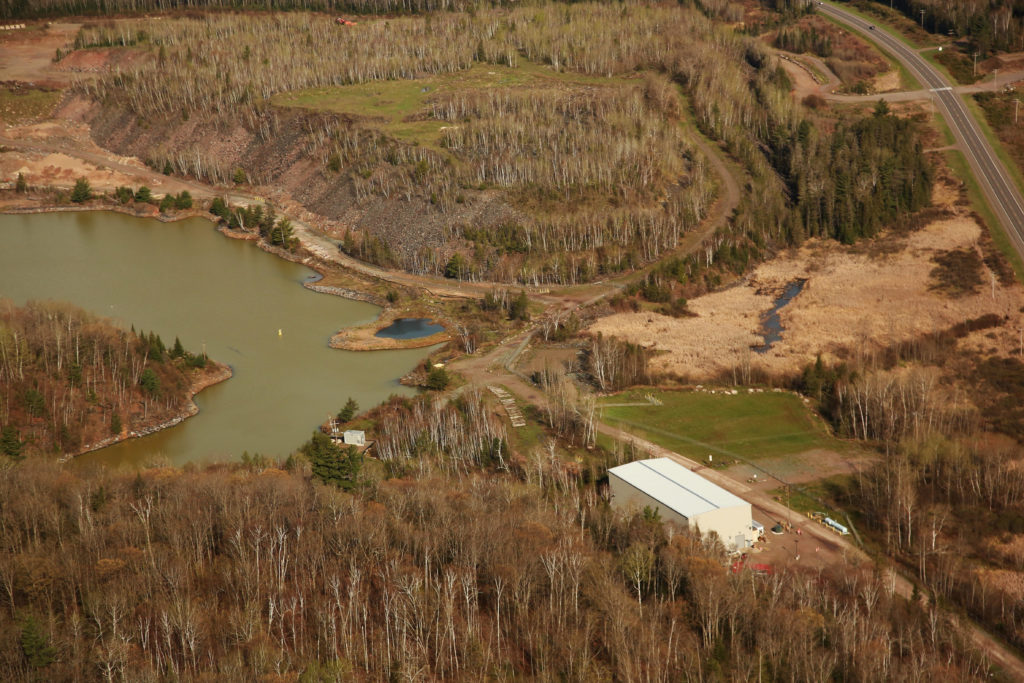
Aerial photograph showing Humboldt Mill Wastewater Treatment Plant, and the north end of the Humboldt Pit Lake, referred to by the permit amendment request as the “Humboldt Tailings Disposal Facility” (HTDF) or the “facility.” Photo by Jeremiah Eagle Eye, 2017.
Read the Mining Action Group’s full public comments on the Humboldt Mill Permit Amendment Request, Condition F.4 of MP-012010, here.

FOR IMMEDIATE RELEASE
CONTACTS
Kathleen Heideman, Mining Action Group, info@savethewildup.org (906) 662-0037
Nathan Frischkorn, Mining Action Group, frischkornnathan@gmail.com (906) 251-0113
Gregg Bruff, UPEC Coordinator, gregg.upec@gmail.com (906) 201-1949
Concerned Citizens Fight to Protect Menominee River Wetlands from Sulfide Mine
The Mining Action Group of the Upper Peninsula Environmental Coalition (UPEC), in collaboration with regional environmental allies and fishing organizations, has secured independent, third party reviews of Aquila Resources’ Back Forty Wetland permit application. If granted, this permit would authorize the destruction and impairment of wetlands caused by the Back Forty mine.
“Aquila proposes to destroy wetlands in order to build a sulfide mine on the bank of the Menominee River. Is this a good idea? We don’t think so, given the proximity of wetlands to the river, and concerns about the company’s plan to follow the orebody deeper underground. This site is quite complex, hydrologically, with wetlands surrounding the facility. We believe that wetland impacts may be significantly underestimated, since additional years of underground mining would greatly increase the groundwater drawdown. To help protect the Menominee River watershed, we have secured two independent reviews of this permit,” said Kathleen Heideman, UPEC board member and a member of the Mining Action Group (MAG).
The Wetland permit was public noticed on December 8th, and the Public Comment is now open. A Public Hearing has been scheduled for January 23, 2018 at 6:00 P.M. The hearing will take place in the small gym at the Stephenson High School, W526 Division Street, Stephenson, MI 49887.
A red flag review will be conducted by Dr. Kendra Zamzow of the Center for Science in Public Participation (CSP2), which analyzes mining applications and provides objective research and technical advice to communities impacted by mining. The permit will also be reviewed by Dr. Tom Myers, a hydrologic consultant who works with conservation organizations and others on mining, natural gas, and water rights development, with specific interests in contaminants and mine dewatering.
“These technical reviews will help us identify whether there are any errors or inconsistencies between groundwater data and Aquila’s predicted impacts to wetlands, and assist our grassroots effort to ensure that concerned citizens, stakeholders and regulators are fully informed as to the true impacts of this permit,” said Nathan Frischkorn, a Fellow with the Mining Action Group.
A broad coalition of fishing groups, local residents, tribal members and environmental groups are united in their opposition to the Aquila Back Forty project. Downstream communities and residents are concerned about the potential impacts to drinking water and tourism, and have passed resolutions against the project. Marinette County unanimously passed a resolution opposing the Back Forty; additional resolutions of opposition have been passed by the Menominee Indian Tribe of Wisconsin, the Oneida Nation, the Keweenaw Bay Indian Community, the Midwest Alliance of Sovereign Tribes, the towns of Porterfield, Wagner and Peshtigo, and the city of Marinette. On the Wisconsin side of the river, counties opposed to the project include Door County, Oconto County, Shawano County, Menominee County, and Brown County, which includes the city of Green Bay. After concerned citizens levied significant pressure on local officials, Menominee County became the first county in Michigan to pass a resolution opposed to the Back Forty mine. Of deep concern are downstream impacts to fisheries and water quality, since the Menominee River flows into Lake Michigan.
“The Menominee River is my friend. Since my brother and I were first introduced to the river’s terrific bass fishing by my friend Dave, I’ve taken multiple two and three day fishing trips on the Menominee every summer. It gives me and my fishing friends a lot of excitement when those bass, especially the big ones, are seen and when they strike at our flies. The Menominee is a valuable resource that shouldn’t be damaged or destroyed, which is why I’m working to protect it from the problems the proposed Back Forty mine would cause. I don’t want to lose the river to a polluting metallic sulfide mine,” said Dick Dragiewicz, an avid fisherman.
If fully permitted by the Michigan Department of Environmental Quality (DEQ), the Back Forty will be an 83 acre, 800 feet deep, open-pit sulfide mine. The mine site is located on the bank of the Menominee River, the largest watershed in the wild Upper Peninsula of Michigan, only 100 feet from the water. Milling will take place on site – using cyanide and other chemicals – and waste will be stored on site, with some tailings waste remaining permanently. When mining is complete, the pit will be backfilled with waste rock and tailings, most of which is considered “reactive”, capable of producing acid mine drainage (AMD) when exposed to air and water. AMD devastates watersheds. It is difficult and expensive to remediate, and may continue leaching from the tailings for hundreds or thousands of years. In light of the extreme risk posed by this sulfide mining project, American Rivers included the Menominee River in their 2017 list of “America’s Most Endangered Rivers.”
The destruction of wetlands threatens not only the Menominee River, but Michigan and the Great Lakes. Michigan has lost about 4 million acres of wetlands since the early 1800s, or 40% of the total wetlands that covered the state before European colonization. According to a 2014 report by the DEQ, the state lost 41,000 acres between 1978 and 2005, or more than 1,000 acres per year on average. Wetlands are important ecosystems that provide many benefits, including water filtration, erosion and flood control, and essential habitat for a diverse array of species. Any damage to wetlands along the Menominee River would have a negative effect on not only the river, but on downstream communities as well.
Independent technical reviews of the Aquila Back Forty Wetland permit are made possible by the generous support of numerous groups and individuals concerned about the future health of the Menominee River. Working collaboratively, the Mining Action Group of the Upper Peninsula Environmental Coalition and the Front 40 secured small grants and donations from Freshwater Future, Superior Watershed Partnership, the Western Mining Action Network, DuPage Rivers Fly Tyers (DRiFT), Northern Illinois Fly Tyers (NIFT), Badger Fly Fishers, M&M Great Lakes Sport Fisherman, Wisconsin Smallmouth Alliance, Fly Fishers International, Great Lakes Council of Fly Fishers International, the Emerick Family Fund, and individual fishing enthusiasts throughout the Great Lakes area.
The Wetland Permit application materials are available for download and review: https://miwaters.deq.state.mi.us/miwaters/#/external/publicnotice/info/3338938032851742207/documents
Concerned citizens may submit written comments to the DEQ through February 2, 2018: https://miwaters.deq.state.mi.us/miwaters/#/external/publicnotice/info/3338938032851742207/comments
####
Founded in 1976, the Upper Peninsula Environmental Coalition’s purpose remains unchanged: to protect and maintain the unique environmental qualities of the Upper Peninsula of Michigan by educating the public and acting as a watchdog to industry and government. UPEC is a nonprofit, registered 501(c)(3) organization. For more information, call 906-201-1949, see UPenvironment.org, visit our Facebook page, or contact: upec@upenvironment.org.
The UPEC Mining Action Group (MAG) is a grassroots effort to defend the clean water and wild places of Michigan’s Upper Peninsula from the dangers of sulfide mining. Contact the Mining Action Group at info@savethewildup.org or call (906) 662-9987. Learn more about the Mining Action Group at miningactiongroup.org or follow MAG’s work on Facebook or Twitter.
More information: http://bit.ly/SaveMenominee
Houghton, Michigan – Those who’ve been following the problems created by Highland Copper Company (Orvana Minerals) exploratory drilling in and around the Porcupine Mountains Wilderness State Park (“Porkies”) earlier this year may have noticed a recent flurry of media stories featuring the mining company’s officials, touting their purported remediation of land along the County Road 519 (CR-519) right-of-way. After churning up more than half a mile of snowmobile trail paralleling the road, the company went silent on the issue until recently, when they presented a new, and largely fictionalized version of what happened last spring, and the environmental damage that resulted in the Michigan Department of Environmental Quality (DEQ) halting Highland’s drilling activity on April 4.
Highland’s problems arose soon after they began drilling within the Park itself, on February 5th. Unseasonably warm weather forced the company to end drilling in the Park in late February, as required by their agreement with the Michigan Department of Natural Resources (DNR). Instead of halting *all* drilling in the area until conditions (thawing snow cover) improved – potentially delaying Highland’s exploration work for another year – the company charged ahead, and began drilling on a narrow strip of land along CR-519. This 466 foot “right of way” (233 feet from the center line in each direction) is owned by Gogebic County, although a legal description includes the east side of the right-of-way within the Presque Isle River Scenic area.
Highland’s contractor kept drilling for over two weeks, even as the warm spell continued. “What was the company thinking?” asked Horst Schmidt, president of the Upper Peninsula Environmental Coalition (UPEC). “Anybody could see that conditions had deteriorated. Highland’s drilling should have been stopped much sooner.”
In late March temperatures climbed into the 40’s and 50’s. The snowmobile trail used to access drilling sites on the east side of CR-519 soon thawed, and was churned into mud soup. Only after the heavy equipment sank several feet into the muck did the company admit that spring had arrived. The facts, damages, and the dates are undisputed.
Highland Copper’s most recent press conference presented company officials as clueless regarding the location or extent of wetlands, and unable to discern that the ground was thawing. Snowmobilers gave up and gravel roads were weight-restricted for spring breakup, but Highland continued drilling into early April.
The drilling stopped only after concerned citizens from the UPEC Mining Action Group (MAG) published a press release, documented the environmental damages, and shared the photographs on their website. MAG’s alarming photographs of the damage were quickly picked up by the media, and brought to the attention of the Michigan DEQ. The DEQ promptly sent staff from the Marquette office to the site on Tuesday, April 4. The company was required to suspend work that day, and soon after were issued a Violation Notice by the DEQ.
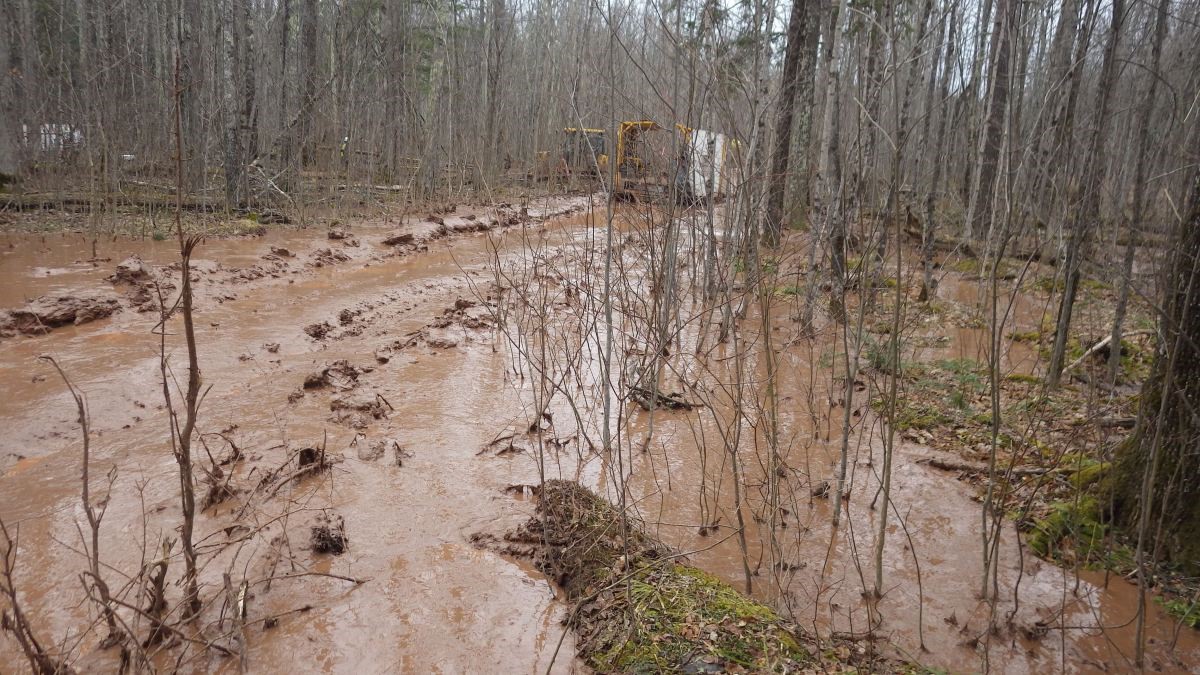
Highland now maintains they didn’t anticipate the spring warm-up, and didn’t know that much of the land was wetland until they received a report from their consultant, King & McGregor. Meanwhile they turned ½ mile of snowmobile trail into a muddy mess. April 2, 2017.
During their recent media event, Highland Copper’s Vice President of Project Development, Carlos Bertoni, said “When we were drilling here in the spring, early April, the weather became much warmer than we expected.” This is an unbelievable assertion, given that the spring thaw began more than a month earlier.
Bertoni also stated, “Myself as a geologist I could not tell you what is wetland and what is not wetland,” The claim that Highland did not realize they were severely damaging the land until their consultant (King & McGregor) completed a report pointing out that sections of the trail crossed wetlands is also not credible.
“Don’t you think they should be required to hire consultants before they drill?” asked UPEC board member Nancy Warren, who had also been monitoring the site. Neither the company nor the DEQ made any mention of the King & McGregor report at the time.
Now, five months after sediment eroded into protected wetlands and mud flowed down the ditches, what is the status of the company’s environmental remediation effort? First they threw straw bales and bundles into the ditch to slow down the flow of water. Then they smoothed out the ruts and seeded English rye grass (not “native plants” as Bertoni claimed). The damage is still clearly visible along the trail as well as away from the road. Mud that ran north along the ditch and off the site last spring ended up on the floodplain of the Presque Isle River.
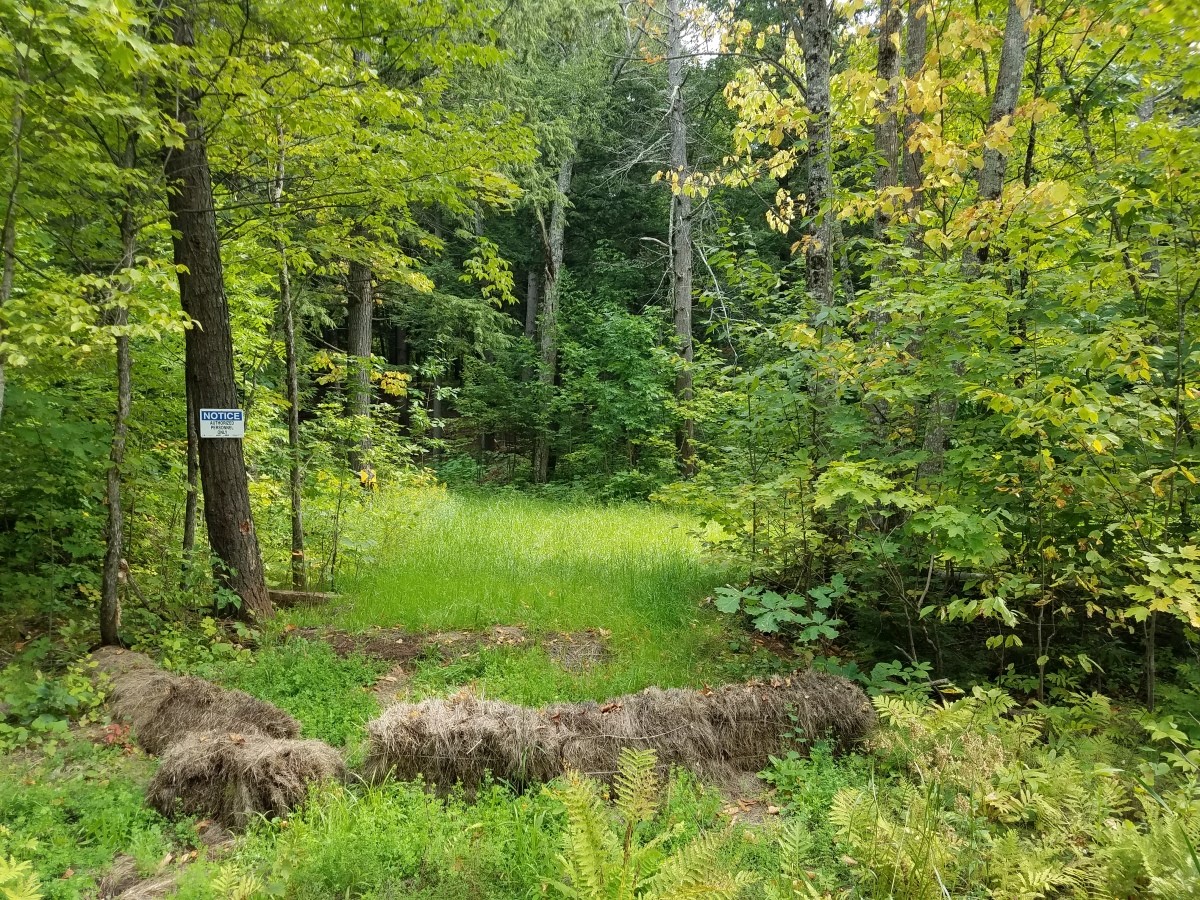
Five months later, the site has been stabilized. The trail (behind the hay bales) has been seeded with English rye grass, and native plants are slowly re-establishing on their own. September 3, 2017.
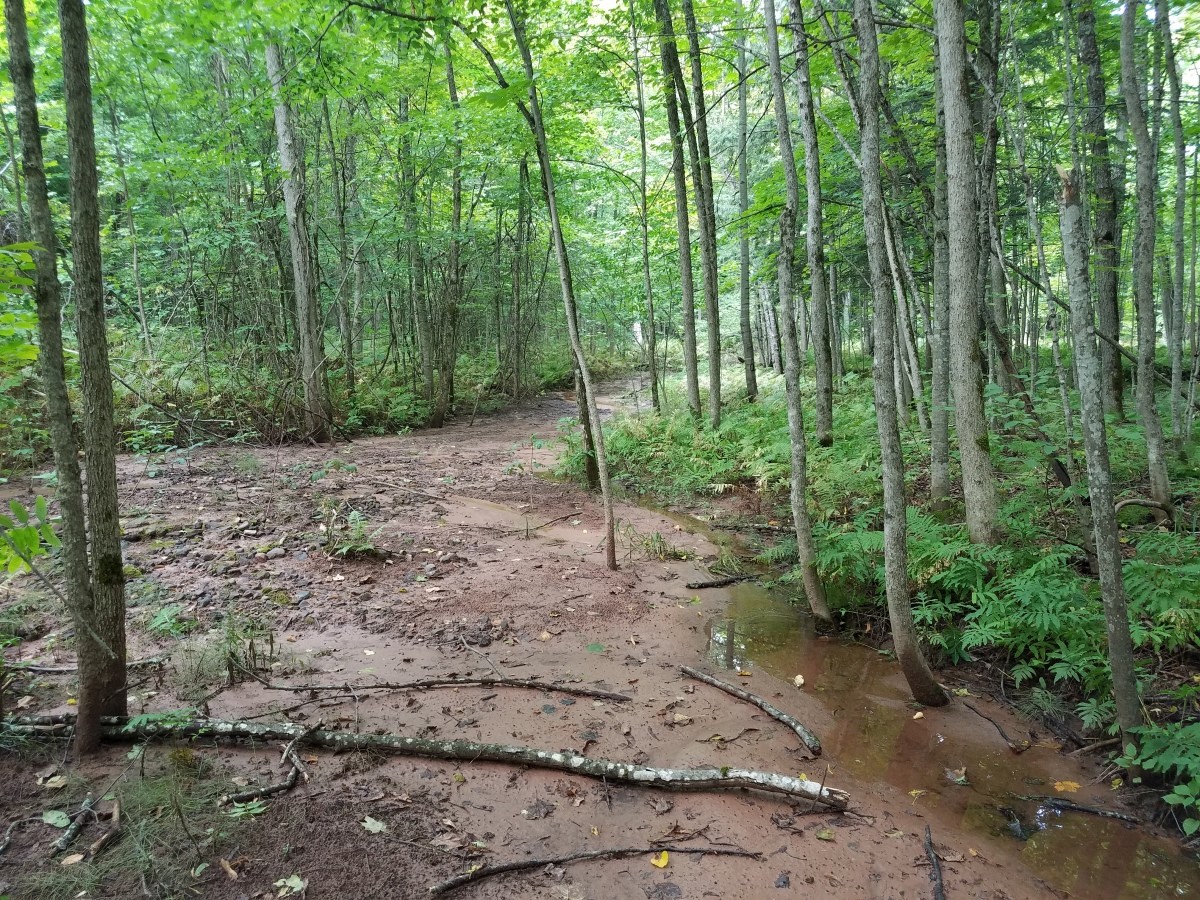
The company was cited for allowing muddy runoff to reach Gipsy Creek, on the southern end of drilling site. However, much of the mud flowed north along the ditch and down the wide ravine of the Presque Isle River, where it was deposited on the floodplain within the Park. Since the growing season is ending, this area continues to be susceptible to erosion going into winter. September 3, 2017
Why are MAG environmentalists concerned about a seemingly minor incident at the far western end of the Porkies? If Highland Copper (or their contractors) will not do the right thing when they think no one is watching, what will happen when they actually start mining? Since their Copperwood mine project sits on the shore of Lake Superior, the stakes are extremely high. Highland is already talking about mining not only next to, but underneath the Porcupine Mountains Wilderness State Park, which makes the project exponentially more risky.
In their original joint press release, the DNR and DEQ failed to acknowledge the critical importance of citizen vigilance in this situation. “I’m outraged that volunteer activists from the Mining Action Group were never recognized for monitoring Highland’s irresponsible drilling activities and documenting the damages to Michigan’s natural resources. I strongly feel that the vital watchdog role played by concerned citizens — environmentalists, not the state — must not be scrubbed from the official record.” said Kathleen Heideman, UPEC board member and a member of the Mining Action Group (MAG).
“Highland’s actions are highly irresponsible. If they are going to make this much of a mess at such an early stage in the project, how can we expect them to mine responsibly? If they can’t even be bothered to pay attention to the condition of the land around them, how can we trust them to not pollute Lake Superior? Carelessness is not a culture that will change overnight, and this incident makes it appear that Highland has developed a culture of carelessness,” said Nathan Frischkorn, a 2017 Fellow working with the Mining Action Group.
“This incident shows once again that mining companies are so interested in appearances and retaining complete control that when forced to act, they may go so far as to fabricate their own stories.” said UPEC president Horst Schmidt.
RELATED NEWS STORIES
Smithsonian Magazine (February 17, 2017)
http://www.smithsonianmag.com/smart-news/mining-exploration-begins-michigans-porcupine-mountains-180962108/
Michigan Department of Natural Resources (April 6, 2017)
State agencies addressing erosion concerns at Porcupine Mountains
https://content.govdelivery.com/accounts/MIDNR/bulletins/192acad
Keweenaw Now (May 12, 2017)
DEQ cites Highland Copper’s wetlands, soil erosion violations from mining exploration in Porkies, along CR 519
http://keweenawnow.blogspot.com/2017/05/deq-cites-highland-coppers-wetlands.html
UP Matters.com (August 8, 2017)
http://www.upmatters.com/news/ local-news/highland-copper- company-provides- rehabilitation-work-update-on- county-road-519/785568630
ABC News 10 (August 9, 2017)
Exploratory drilling rehabilitation efforts underway
https://abc10up.com/2017/08/09/exploratory-drilling-rehabilitation-efforts-underway/
Fox News TV 6 Marquette (August 9, 2017)
http://www.uppermichiganssource.com/content/news/Highland-Copper-rehabilitating-wetlands-in-the-Porcupine-Mountains-439515913.html
The Daily Mining Gazette (August 11, 2017)
Drilling Fix Media Show: Gazette not invited to mine company’s unveiling of drill damage repair within park
http://www.mininggazette.com/news/2017/08/drilling-fix-media-show-gazette-not-invited-to-mine-companys-unveiling-of-drill-damage-repair-within-park/
The public comment period on the proposed Eagle East permit amendment came to a close at 5pm today. The Mining Action Group hosted two public comment workshops on Tuesday to help guide people through the process of crafting and submitting public comments. We thank everyone who submitted public comments and voiced their concern about this incomplete and misleading permit amendment application.
Our conclusion:
“We believe the Eagle East amendment application does not meet the requirements of Part 632. The applicant has provided an incomplete analysis of the proposed project’s cumulative Environmental Impacts. The proposed amendment attempts to circumvent Part 632’s environmental protections in connecting two distinctly different orebodies through a single mining permit, which deliberately masks, underestimates or fails to consider the project’s cumulative environmental impacts. The proposed amendment also fails to insure that additional mining will not “pollute, impair, or destroy the air, water or other natural resources or the public trust in these resources” as required by Part 632.
We formally request that the Michigan Department of Environmental Quality reject the proposed Eagle East amendment request and attached EIA as misleading and technically inadequate, and because permit segmentation is being used in order to secure a new mining permit without full consideration of the environmental impacts. We are concerned that the Eagle East review has divided public consideration of the mining (jobs) from the most negative environmental impacts (waste, and further degradations of the Middle Branch of the Escanaba River, caused by industrial wastewater discharges).”
You can read MAG’s full public comments on the Eagle East permit amendment request here.
TELL INVESTORS THIS PROPOSED OPEN PIT SULFIDE MINE NEXT TO THE MENOMINEE RIVER HAS NO “SOCIAL LICENSE TO OPERATE”
Aquila Resources has proposed a large open pit sulfide mine a mere 150 feet from the Menominee River (a major Lake Michigan tributary which forms the Wisconsin-Michigan border and flows into Green Bay). The mine footprint is located on the original tribal homeland of the Menominee Indian Tribe of Wisconsin. The tribe is concerned about pollution of the Menominee River and the destruction of sacred sites.
TAKE ACTION — Send a letter to the main financial investors in the Back Forty proposed mine letting them know that this project faces growing opposition* in Wisconsin and Michigan and does not have a “social license to operate.” According to mining risk analysts like Ernst & Young, the fourth greatest risk to mining investors comes from “ignoring community voices and their environmental and public health concerns.”
Send letters to the principal investors in the Back Forty project:
Mr. Oskar Lewnowski, CIO
Orion Mine Finance Group
1121 Avenue of the Americas, Suite 3000
New York, NY 10036
Candace Brule, Investor Relations
HUDBAY
25 York Street, Suite 800
Toronto, Ontario M5J 2V5
Canada
Email: investor.relations@hudbaymminerals.com
Ruffer
80 Victoria Street
London SW1E 5JL
United Kingdom
* Growing opposition as indicated by resolutions against the proposed mine by local units of government, including Marinette County, Brown County, the cities of Peshtigo and Marinette and the towns of Wagner and Porterfield in Wisconsin. Tribal governments that have passed resolutions against the mine include the Menominee Indian Tribe of Wisconsin, the Oneida Tribe of Wisconsin, the Bad River Ojibwe Tribe of Wisconsin, the Keweenaw Bay Indian Community of Michigan, the Pokagon Band of Potawatomi,the Saginaw Chippewa Tribe and the Chippewa Ottawa Resource Authority of Michigan. American Rivers, a national conservation organization has listed the Menominee River as one of the 10 most endangered rivers due to the threat from sulfide mining”.
July 5, 2017
Mr. Oskar Lewnowski, CIO
Orion Mine Finance Group
1211 Avenue of the Americas
Suite 3000
New York, NY 10036
Dear Mr. Lewnowski,
I am once again writing in regard to Orion’s 19% investment in Aquila Resources’ Back 40 metallic sulfide project in Michigan’s Upper Peninsula. Local and statewide
opposition to this project has grown considerably since my last update (November, 2016) and should be of great concern to your shareholders.
While Aquila now has three of the four permits for the project it still does not have the support of the people and communities that may be adversely affected by pollution from the proposed mine, including the Menominee Indian Tribe of Wisconsin, that has filed a petition for a contested case hearing challenging the Michigan Department of Environmental Quality’s (DEQ) approval of the mining permit.
Since my last update several counties and townships downstream from the proposed mine have joined the Marinette County Board in passing resolutions urging the Michigan DEQ to deny permission for the mine. These include Brown and Menominee Counties in Wisconsin, the City of Peshtigo in Wisconsin, and the Towns of Porterfield and Wagner in Wisconsin. Door County in Wisconsin will be considering a resolution against the proposed mine at their next meeting. The headline from WeAreGreenBay.com (June 23, 2017) sums up the political sentiment succinctly: “Northeast Wisconsin county leaders making resolutions to condemn Back 40 Mine.”
In addition to the counties and townships opposed to the mine, there are ten tribal governments in Wisconsin and Michigan that have passed resolutions against the project. Seven intertribal organizations, including the National Congress of American Indians (NCAI), have also passed resolutions against the mine. The NCAI has promised to assist the Menominee Tribe to oppose the mine “through media exposure, governmental relations, and to support a call for Congressional oversight hearings to highlight the trust, policy and statutory responsibilities of federal agencies in these matters.”
The April 2017 designation of the Menominee River as one of the 10 most endangered rivers by the national conservation group, American Rivers, has given national visibility to local protests against the mine in Menominee, Michigan and Marinette, Wisconsin. In
announcing the designation of the Menominee River, American Rivers noted that “the proposed mine would pose a significant threat to the cultural and natural resources of the Upper Peninsula, Wisconsin and the Great Lakes Region. Groundwater, rivers and ultimately Lake Michigan would become contaminated if acid mine drainage were to seep into surface and groundwater, posing a significant danger to fish and other aquatic life.”
If you have been reading the press releases from Aquila celebrating the progress of the permitting process, you may be surprised to learn that opposition to the project has been steadily growing to the point where Joe Maki, the head of the DEQ’s mining division has refused to participate in informational meetings before the Menominee and Marinette City Councils because he would rather avoid “a potentially hostile environment” (Penny Mullins, “City council hears mine talk,” Eagle-Herald, June 12, 2017). I have provided a sampling of the news coverage in this packet to document this political reality.
You may dismiss this growing opposition as irrelevant because Joe Maki has stated that public opposition will have no impact upon the mine permit decision. As long as Aquila meets the conditions of the permit requirements, they will be granted permission to mine.
As I pointed out in my last update, this perception is at odds with the growing realization within the mining industry that a social license to operate (SLO) “is an essential part of operating within democratic jurisdictions, as without popular support it is unlikely that agencies from elected governments will willingly grant operational permits or licenses” (Fraser Institute, “What is the Social Licence to Operate (SLO)?” 2012).
As early as 2003, Business for Social Responsibility warned investors “that where there was well-organized, significant opposition to a mining project, no matter their country or political stripe and no matter the prevailing laws, politicians were reluctant to go against
it. In fact, global companies are under greater pressure to respond to broader social expectations today, regardless of the prevailing legal structure, than at any other time in recent history.” (“The Social License to Operate” San Francisco, CA).
Once again, I urge you to review the extensive documentation of community opposition in this packet and make your own judgment about whether this project has a social license to operate.
Sincerely,
Al Gedicks, Executive Secretary
Wisconsin Resources Protection Council
“Never doubt that a small group of thoughtful, committed citizens can change the world; indeed, it’s the only thing that ever has.” – Margaret Mead
Friends,
ACTION ALERT! Tell the Michigan Department of Environmental Quality exactly what you think of Lundin Mining’s requested amendment of the Eagle Mine permit — which would require building more than 8 KILOMETERS of NEW tunnels to reach a totally DIFFERENT orebody, called “Eagle East.”
Eagle East is a new orebody located beyond the previously permitted project boundary for the Eagle Mine. This major expansion could have serious environmental impacts that were never considered under the original permit. More mining will mean more tailings, more dewatering, and increased risk of contamination. Read the proposed Eagle East permit amendment for yourself!
QUESTIONS YOU SHOULD ASK ABOUT EAGLE EAST
1.) Lundin Mining claims the life of Eagle Mine will be extended only 1 or 2 years by extracting the Eagle East deposit. Is it worth the environmental impact to the beloved Yellow Dog Plains, or the Salmon Trout, Yellow Dog and Escanaba Rivers? Eagle East will result in increased hauling, air pollution emissions, tailings waste problems for Humboldt Mill, and increased discharge of pollutants to the Middle Branch of the Escanaba River.
2.) Lundin describes the combined ore as “Eagle ore” but Eagle and Eagle East are different orebodies, born from different volcanogenic sources. The new Eagle East orebody contains higher grades of copper and nickel, as well as other toxic heavy metals. These metals can be extremely dangerous for aquatic life, headwater streams, and wetlands. Were these threats taken into account in the initial environmental impact assessment, or does this represent a significant change from the original permit?
3.) The Eagle East orebody is located three thousand feet below the surface, much deeper than Eagle, so the ore contains high quantities of entrapped salts from ancient brines. These salts will create long term problems for Lundin’s Humboldt Pit, where the addition of Eagle East tailings are expected to nearly fill the pit with waste, dramatically increasing Total Dissolved Solids. Eagle’s wastewater treatment plant will also need a new crystallizer.
4.) Mining experts have repeatedly warned that the Eagle orebody is filled with hard-to-map “smaller-scale discontinuities that could weaken the rock mass.” Last year’s undisclosed underground “collapse” at Eagle Mine throws the overall safety of the mine’s expansion into question. Has Eagle Mine’s stability been dangerously overestimated from the beginning? Are you concerned about last year’s rock failure at Eagle Mine?
Please let the DEQ know that you want ALL of these serious questions thoroughly reviewed and resolved, before the Eagle Mine permit amendment is considered.
The DEQ has extended the public comment period to July 20th, instead of the previous July 6th deadline. Following the federal holiday for the 4th of July, we will share more details about Eagle East and the environmental impacts, citing specific concerns.
SUBMIT WRITTEN COMMENTS! Public comment on the proposed permit amendment will be accepted until 5 PM on Thursday, July 20th, 2017.
Send all comments to DEQ-Mining-Comments@michigan.gov or mail them to:
DEQ Eagle East Permit Amendment
Office of Oil, Gas, and Minerals
1504 West Washington Street
Marquette, MI 49855

Caption: Industrialization of the Yellow Dog Plains? Eagle Mine’s environmental footprint expands with Eagle East exploration — far beyond the original mining permit. This aerial photograph shows (1) Eagle Mine facility, and active drill rigs in the (2) southern drilling area for Eagle East (3) northern drilling area for Eagle East and (4) eastern drilling area for Eagle East. * The general location of the Eagle East orebody, some 3000 feet below the surface, is outlined by the large circle. May 2017, photograph by Jeremiah Eagle Eye.
Finally, please support our work – even a small contribution makes a big difference.
Onward,
Kathleen Heideman, MAG/UPEC Board Member
Links:
Lundin Mining Corp – Cover for Application to Amend Mine Permit MP012007
Lundin Mining Corp – Mining Permit Application Amendment (Volume I)
Lundin Mining Corp – Environmental Impact Assessment (Volume II)
Lundin Mining Annual Mining and Reclamation Report on Eagle Mine 2016
Michigan’s Part 632 Nonferrous Metallic Mining Regulations
Note: the active Eagle Mine permit, and the original Environmental Impact Assessments, are now available through the DEQ’s ftp server, under
Geowebface > Mining > Eagle Project.
Follow these instructions to log into Geowebface:
http://www.michigan.gov/documents/deq/DEQ_FTP_372266_7.pdf